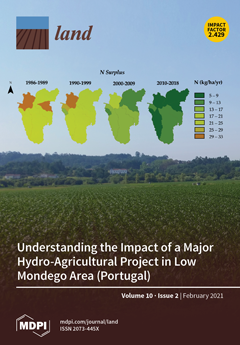Satellite remote sensing technologies have a high potential in applications for evaluating land conditions and can facilitate optimized planning for agricultural sectors. However, misinformed land selection decisions limit crop yields and increase production-related costs to farmers. Therefore, the purpose of this research was to develop a land suitability assessment system using satellite remote sensing-derived soil-vegetation indicators. A multicriteria decision analysis was conducted by integrating weighted linear combinations and fuzzy multicriteria analyses in a GIS platform for suitability assessment using the following eight criteria: elevation, slope, and LST vegetation indices (SAVI, ARVI, SARVI, MSAVI, and OSAVI). The relative priorities of the indicators were identified using a fuzzy expert system. Furthermore, the results of the land suitability assessment were evaluated by ground truthed yield data. In addition, a yield estimation method was developed using indices representing influential factors. The analysis utilizing equal weights showed that 43% of the land (1832 km
2) was highly suitable, 41% of the land (1747 km
2) was moderately suitable, and 10% of the land (426 km
2) was marginally suitable for improved yield productions. Alternatively, expert knowledge was also considered, along with references, when using the fuzzy membership function; as a result, 48% of the land (2045 km
2) was identified as being highly suitable; 39% of the land (2045 km
2) was identified as being moderately suitable, and 7% of the land (298 km
2) was identified as being marginally suitable. Additionally, 6% (256 km
2) of the land was described as not suitable by both methods. Moreover, the yield estimation using SAVI (R
2 = 77.3%), ARVI (R
2 = 68.9%), SARVI (R
2 = 71.1%), MSAVI (R
2 = 74.5%) and OSAVI (R
2 = 81.2%) showed a good predictive ability. Furthermore, the combined model using these five indices reported the highest accuracy (R
2 = 0.839); this model was then applied to develop yield prediction maps for the corresponding years (2017–2020). This research suggests that satellite remote sensing methods in GIS platforms are an effective and convenient way for agricultural land-use planners and land policy makers to select suitable cultivable land areas with potential for increased agricultural production.
Full article





